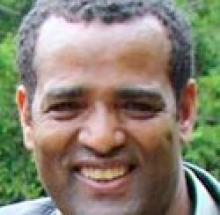One of the many challenges that are common to most new churches is leadership. Those who have decided to be part of Mennonite Church Canada’s area churches are not immune. This challenge can be both an excellent opportunity and highly demanding for the welcoming area churches. It’s an excellent opportunity because one of the visions of MC Canada is growing leaders. But it requires time, energy, finances and more from the area church.
What are some of the most rewarding ways of facing this challenge head on? Does the area church have the means to tackle this challenge? How far is it willing to go when it comes to solving leadership problems of the starting churches? Identifying potential leaders, investing in their development as leaders and installing them to the right task would go a long way.
Identifying
Some of the gifts Christ—the chief executive officer of the church—has bestowed on the community of faith are leaders in many capacities. Identifying these potential leaders is the task of the community, especially of those who are already established as churches. Jesus himself is a prime example for this process. He identified the fishers of Galilee as potential leaders of the future churches. Clearly seeing leadership in a fisher requires a divine set of eyes, hence praying and fasting to receive guidance from the Holy Spirit.
Newcomers need leaders who are eager to learn both the culture of being a people in this great country and the culture of being a church also. They desperately need leaders who play prophetic roles like Jeremiah (Jeremiah 29:4-7), and proclaim to them that they are here long term. They need leaders who enthusiastically encourage the community to learn the languages of the country, dream bigger than their ethnic group, pray and contribute to the well-being of the country, and seize every opportunity to grow as disciples of Christ.
How can we identify these leaders? This certainly should be the question welcoming area churches may explore and answer urgently.
Investing
Once potential leaders are identified, churches should be willing to invest their energy, time, money and expertise in the process of growing these potential leaders into actual leaders.
History proves that growing leaders is one of the most expensive tasks. If we expect new churches to become healthy, growing communities of faith without heavily investing in their leadership development, we make a deadly mistake. It is time for the established church to make intentional investment in the future leaders of new churches.
Area churches may claim that they have made significant investments so far. True, but it is not enough. How many pastors of new churches have been studying in our seminaries? Do we have some graduates we are mentoring to the next step of their leadership life? Do the pastors and lay leaders of the new churches know the importance of formal education for the health and growth of their congregations? Who is responsible to create this awareness?
Installing
Telling a leader that he/she is a leader and taking every step in the process of the development of his/her leadership is nothing without installation. A leader is to lead. Installing leaders to a task of leading a congregation is not just a ceremonial exercise. It is entrusting leaders who have been carefully qualified and prayerfully empowered to the demanding task of leading a people of God. Therefore, this final step is as important as the first two.
Fanosie Legesse was born and raised in Ethiopia, but has lived “eight winters” in Canada. He and his family were volunteers with Mennonite Church Canada for three years at Meserete Kristos College in Debre Zeit, Ethiopia. He hopes to begin studies for his doctorate of ministry degree next year. He is a member of Bethel Mennonite Church, Elora, Ont.
--Posted Oct. 8, 2014



Add new comment
Canadian Mennonite invites comments and encourages constructive discussion about our content. Actual full names (first and last) are required. Comments are moderated and may be edited. They will not appear online until approved and will be posted during business hours. Some comments may be reproduced in print.